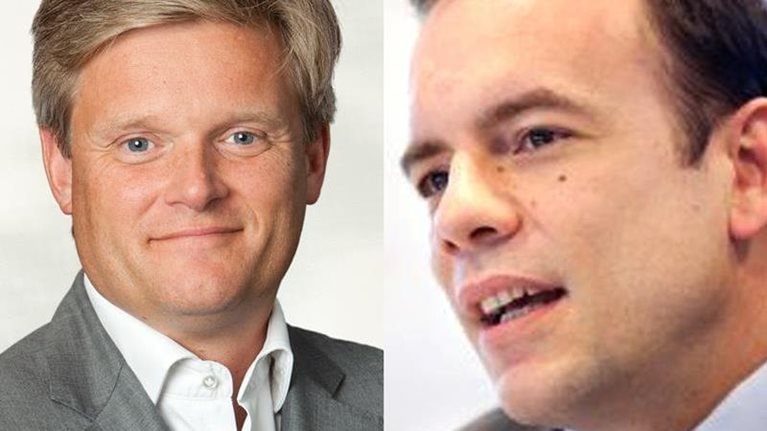It’s not easy being agile when you’re a telecommunications provider. Your value proposition is based on the efficient management of large, complicated, interconnected systems. Your customers expect 100 percent uptime, which can make it risky to experiment with new technologies and innovations. KPN, a service provider based in the Netherlands, several years ago began deploying digital technologies and processes and is now finding some early success with agile methodologies. Leon Bedaux, head of digital IT at the company, says it was important to have IT and business leaders jointly kick-start a comprehensive technical and cultural transformation “to ensure the flexibility of the full organization.” In this conversation with McKinsey’s Arnoud Rozendaal, Ruben Schaubroeck, and Naomi Smit, Bedaux describes how the company is organizing this transformation.
Stay current on your favorite topics
McKinsey: What prompted the shift to agile? What challenges was KPN facing?
Leon Bedaux: At a broad level, we realized that we were competing not just with other telcos but also digital-native companies. Their attempts to engage our customers drove up our customers’ expectations about our own digital capabilities. We were spending a lot of money trying to keep up, but we continued to lack speed, flexibility, and a strong customer focus. We were overly dependent on our sourcing partners; a lot of our resources were located on a different continent, far away from the business. In the meantime, we were often delivering services over budget and not always meeting the needs of the business. We decided the only way to change this was to look at agile methodologies, and part of that was insourcing knowledge and bringing the developers closer to the business again.
McKinsey: You started insourcing at a time when there was a strong focus at KPN on cost reduction, especially in IT. How did you get the support to bring full-time employees back into the fold?
Would you like to learn more about our Digital McKinsey Practice?
Leon Bedaux: You’re right, this was no time to ask for extra money. Fortunately, we didn’t have to. KPN’s digital initiatives have never been totally about cost; they’re about the added value we can deliver to customers. So we emphasized with the board that cost containment and simplification in IT would allow us to dramatically improve customer experiences. We could provide better service with virtually no additional cost. Also, we moved all of our applications to digital open-source technology, which helped us cut our run rate in half while delivering the same output. Our overhead is lower, and we’ve automated virtually everything, so our developers can spend about 90 percent of their time on software rather than on other non-value-adding tasks.
McKinsey: How did you begin to make the switch to agile ways of working?
Leon Bedaux: We didn’t fall into the trap of relying on an all-encompassing plan for change. Customer and market needs are always changing. Technologies are always changing. You cannot lock yourself in at the start. You have to take it step-by-step, trusting that you will end up where you want to be. We had many conversations with leaders in other companies regarding how they built their organizations more fully around the customer, and we learned from that. We knew we needed to shift from our traditional processing platforms to open-source cloud environments, which are more stable and faster than some other solutions. By doing this, we knew we would also be able to attract the kind of cutting-edge talent we wanted. Maybe the most important element was having an environment in which developers could be themselves and have full autonomy to make their own choices. This required a huge change in mind-set across the company. It sounds a little bit scary, but it’s critical. When people make their own choices, they really own what they are doing and work as a team.
Approximately half of the switch to agile involves ways of working, and the other half focuses on how you improve your social skills and team interactions. We are now focusing on that second half. We meet every two weeks to discuss how to create behaviors that enable people and teams to improve.
McKinsey: It sounds like you addressed certain cultural factors. What changes did you need to make to your IT architecture?
Leon Bedaux: In the past, we would build IT looking out five to ten years, according to a very structured plan. Now, we build IT for only 18 months to two years out. The technology is always getting faster, and automation simpler. We need to keep up with that and the business use cases and requirements that may emerge. In this case, we replaced every platform and phased out traditional software—although in the beginning we kept the legacy technology running until we had fully replaced the required functionality. We were able to introduce one KPN identity for all mass-market KPN customers, so they did not need to manage multiple log-ins. We developed a “digital engine” that acts as a single-interface layer between the old telco and the new digital channels and applications. This engine makes about 300 traditional services available by generic APIs1 to every developer, regardless of which area of IT they specialize in. Every customer transaction now runs through this digital engine, offering us real-time control of customer data. This solution will help us get to the point of implementing real-time customer analytics.
McKinsey: What challenges have you encountered, and how are you addressing them?
Leon Bedaux: The first challenge was to embed agile practices in our existing corporate governance. The reporting and steering mechanisms we typically use to manage our business didn’t always map one-to-one with the agile ways of working we had envisioned. We ended up addressing this very pragmatically, through people we called “proxy servers.” These people translated everything we were doing within the digital team to the corporate organization and back. For example, the proxies know what our standard reporting requirements are, and they ensure that we all adhere to them—the business side and digital IT. The designation of proxies helped us get started without having to change the whole world immediately.
The second challenge was talent. We needed to hire people who understood digital technologies and could adapt quickly, as new technologies are arriving at an extremely fast pace. And we needed to give the digital team an exciting environment. Locating our digital team in Amsterdam rather than The Hague—where HQ is—was a conscious decision, as we wanted to attract international talent. We hired our own recruiters, co-located in Amsterdam. This was a less traditional decision, as typically recruiting is managed by our central HR group, but we needed to do it to obtain access to the talent pools we were after. We also made a point of hiring some of the leading technologists and businesspeople in the area, and these people then attracted followers. Money was not as important for making the right hires as you would think; offering people an environment in which they could learn and develop, with a lot of freedom to experiment, was much more crucial.
McKinsey: What impact have these organizational changes had?
Leon Bedaux: We have improved our time to market and the quality and reliability of our service. Our downtime has decreased by 90 percent, and we’ve dramatically improved our NPS.2 Not all of this is because of IT, of course, but we believe digital IT has played a major role. We’ve managed to create an environment where people feel energized and motivated; we don’t need to rely on rules and reports to get people moving in the right direction.

Engineering the switch to digital
McKinsey: How has your job changed through this agile transformation process?
Leon Bedaux: I’m not deep in the machine anymore; I ensure that the machine is running. That’s a really huge difference. I set the direction, motivate people, and serve as the interface with the rest of the organization—which is now flat, lean, and with a simple structure. Digital IT has one HR head, four development coaches, a finance manager, and a tech lead, and that’s it. I oversee 30 scrum teams without further formal hierarchy. We have our small “vision” team that sets strategy and guides all development efforts. The key to our success, beyond structure, has been communication and culture change. The transition to agile has not always been easy. But once you see it starting to work—very evident when we saw the energy growing on the floor—it becomes easier to build a path toward new behaviors and ways of working. In the beginning, I would still try to arbitrate between teams if there was a conflict. Over time, I realized that by letting them work through issues themselves, they would solve their own problems, which ultimately made them much stronger together.
McKinsey: What advice do you have for other companies that are contemplating a shift to agile ways of working?
Leon Bedaux: There is enormous potential, but you have to acknowledge the technological and cultural realities. The role of IT is changing. In the past, the business side defined solutions, and IT built them. Now, IT perspectives are driving business decisions. And many companies are still greatly underestimating the power of data—the ability to set up real-time data streams and analyses, thereby creating a clear picture of what’s happening with customers. Currently, leaders sit in on weekly or biweekly meetings, look through reports, and then decide which actions to take. Two weeks after that, actions are taken. When you have a real-time view of performance, however, people can act immediately. They can be more agile, they can create a more energetic environment, and they can boost customer satisfaction. We are aiming to provide the organization with a platform that can explain in real time what errors are occurring and which behaviors are normal and how sales are doing. We can start to act in real time. It will be a very different way of doing business—one that will go a long way toward creating operational excellence here and, most important, meeting customer expectations.



